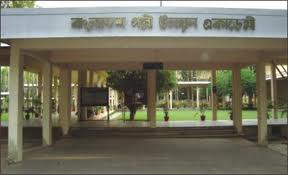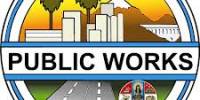Introduction:
Bangladesh Rural Development Board (BRDB) is the prime government organization engaged in rural development and poverty alleviation. BRDB under the Ministry of Local Government, Rural Development and Cooperative (LGRD & C) is the largest service oriented institutional setup of the Government of Bangladesh (GOB) is directly engaged in rural development and poverty alleviation activities in Bangladesh. It’s Head Office based in Dhaka the capital city of Bangladesh .With 57 out of 64 District offices and over 476 Sub-District (Upazilla) Offices across the country. BRDB boasts coverage unmatched by any other Governmental or non-Governmental organization working in rural development and poverty alleviation in Bangladesh. BRDB closely follows reflect supports and reinforces the GOB goal, vision and policies for socio-economic development vis-a-vis rural development and poverty reduction in particular.
It operates by organizing small and marginal farmers, asset less men, women and destitute freedom fighters into cooperative societies and/or informal groups and provide them with short and long-term credit, technology for their socio-economic wellbeing and training. In its provision of services and support, the BRDB seeks to promote self-sufficient, fully sustainable income-generating activities amongst the landless, the rural poor and the marginalized.
The BRDB was established in 1982 and has since then successfully mobilized 5.3 million beneficiaries into cooperative societies and informal groups. It pioneered the two-tier cooperative system and continues to successfully implement it to alleviate the endemic poverty of Bangladesh’s rural populace.
Identification of Problems:
Bangladesh is a developing country of the third world. It has various types of problems. It has to face different types of problems to serve its people. Its administrative structure is the then British formed structure. Many administrative and personnel management Problems are found to do the field report about BRDB. Being a country of the third world it has lack of technology and expert manpower. The main problem found here is the lack of human resource management. If the administration can not work properly, the natural resources will not be distributed well. In my field work basically I have tried my best to find out the problems lied here and problem found in BRDB are mentioned below-
- Ø Problem of recruitment of employees.
- Ø Problem of promotion of employees.
- Problem of training and overseas training.
- Ø Problem of rules and regulations of the employees.
- Ø Economic Problem of t he employee
- Ø Work distribution problem
- Ø Lack of manpower
- Ø Lace of good trainer
- Ø Structural problem.
Purpose of the field work:
The main purpose of my field work is to know practically about BRDB’s function, structure, manpower, management, Salary structure, personnel management. For having got the information that I have done are given below-
- Ø Learning about practical knowledge about BRDB.
- Ø Learning about the duties and works of the officers and staffs.
- Learning about the designation, salary structure, Grade etc.
- Ø Source of fund.
- Ø Allotment of fund
- Ø About recruitment selection process.
- Ø About the problem of code of conduct of BRDB.
- Ø About association of the employees.
- Ø Last of all overall suggestions.
The process of my field work:
For preparing my field work I have visited the Head office of BRDB and especially talked to a director and other officers. Having an important talk with him I have got many informative data about human resources management and promotion system. Besides I have visited Pirojpur Upazilla BRDB office and Luckily got he Deputy Director of Pirojpur there. I have talked to him and many other offices and staffs. Having speech with them I have got many rural level problems and their suggestions about the problems. Besides I have collected many books, journals Gazette from that two offices. I have studied all the books and tried my best to present my report about BRDB.
Functions of the BRDB:
BRDB Continues to provide supports to farmers through in institutional package consisting of (a) Organizing farmers (small & marginal) under Two-Tier Cooperative (b) Mobilizing members own capital through share & saving deposits (c) Offering training on development & extension issue (d) Providing agricultural credit (e) Marketing (f) Technological and Extension supports.
Project/Programs Under BRDB
Since its beginning in early 70s, BRDB has successfully initiated 74 Projects/ Programs beyond the Two-Tier program of which 67 are completed & 7 under going. The ongoing Projects/ Programs are mostly poverty focused & micro credit based. They are: (i) Revolving Agril. Credit Program, (ii) Integrated Poverty Alleviation program-under revenue budget, (iii) Palli Pragati Prokalpa (iv) Participatory Rural Development Project-2, (v) Poverty Reduction through Minor Crop Production, Preservation, Processing and Marketing Program (vi) Employment Guarantee Scheme for Hard Core Poor Project of Northern Region (vii) Productive Employment and Awareness Raising for Rural Women Program-under ADP. During the reporting year under ADP, total allocation against 05 projects was Tk. 2415.00 lakh, fund released Tk. 2401.00 lakh and utilization was TK. 2326.03 lakh (97%). Besides BRDB is assigned by the govt. to implement two more projects/ Program namely, Insolvent Freedom Fighters & their Dependent’s Training & Self-employment Program & Chittagong Hill Tracts Integrated Community Development Project. The project/ Programs are sponsored respectively by the Ministry of liberation war Affairs & Ministry of CHT’s affairs. BRDB has been implementing another Community Development Program entitled “Comprehensive Village Development Programme (CVDP) implemented by the Rural Development & Cooperative Division (RD&CD) as a partner along with BARD, Dept. of Co-operatives & RDA.
A. Co-Operative Section
Among five division of BRDB field service division is one of the most important division. This vision is responsible for implementing the main scheme activities. The activities include formation of informal groups and Co-operative societies, capital formation, credit operation, supply of irrigation equipment, marketing & other extension works such as tree plantation, pisciculture, sanitation, improved chulli installation etc.
The progress in the FY (2007-08) of the Section is mentioned below:
SL. No | Item
| Target (2007-2008) | Achievement (2007-2008) | % | Cumulative |
| 1. | KSS Formation (Nos.) | 990 | 641 | 65 | 70227 |
| 2. | Members Enrolment (Nos.) | 30561 | 20247 | 67 | 2506512 |
| 3, | Share Deposit ( Tk.in lakh) | 212.36 | 101.88 | 48 | 6447.04 |
| 4. | Saving Deposit (Tk.in lakh) | 423.28 | 527.54 | 100 | 9172.57 |
Statutory activities:
Audit | AGM | Election | ||||||
| Auditable | Audited | % | Due | Held | % | Due | Held | % |
| 48184 | 3061 | 6.35 | 38155 | 13401 | 34.34 | 21610 | 9686 | 44 |
B. CREDIT SECTION
Credit Section plays a vital role in the field Service Division. Credit is the main component for attaining sustainability through increasing/ enhancement of agricultural productivity and creation of self-employment opportunities.
Progress of Credit activities as on 30.6.08 (Tk. in lakh)
Table – A
| Source | Target Disbursement (2007-08) | Disbursed (2007-08) | Target for Recovery(2007-08) | Realized (2007-08) | % Recovery |
| Bank | 3434.24 | 2187.28 | 10871.70 | 2566.12 | 24% |
| RLF | 10000.00 | 11041.93 | 10696.21 | 8676.45 | 81% |
| Own Fund | 500.00 | 310.09 | 1281.79 | 492.10 | 38% |
Table – B
Source | Cumulative Disbursement | Due for Recovery Cumulative | Cumulative Realized | % of Recovery |
| Bank | 95691.06 | 93570.77 | 85265.19 | 91% |
| RLF | 43992.63 | 36057.11 | 30955.75 | 86% |
| Own Fund | 4140.93 | 3614.04 | 2824.35 | 78% |
C. Irrigation Section
Irrigation plays a paramount role to boost up agricultural production in the country. From the initial stage of introducing high yielding variety of crops in Bangladesh, irrigation equipment became the most essential component of agriculture. BRDB played a major role in supplying irrigation as well as agricultural equipment in Bangladesh through its cooperative society for modernization of the age-old rain fed agricultural system of the country. Irrigation equipment’s i.e., DTW, STW, LLP & other equipment were supplied to the cooperative societies both in cash and term credit. Sonali Bank & BADC worked jointly with BRDB in this venture. Since inception to 30-06-2008, the total numbers of irrigation and agricultural equipment’s distributed to the cooperators through UCCA-KSS are as follows:
| SI.No. | Type of equipment | Cumulative sale as an30-06-2008 | (Nos. of Equipment under operation (credit sale only) | ||
| Credit(Nos.) | Cash(Nos.) | Total(Nos.) | |||
| 1 | Deep tube well (DTW) | 10,828 | 7,632 | 18,460 | 7129 |
| 2 | Shallow tube well (STW) | 36,733 | 7,790 | 44,523 | 17529 |
| 3 | Low lift pump (LLP) | 4,341 | 15,064 | 19,405 | 2525 |
| 4 | Hand tube well | – | 2,73,000 | 2,73,000 | – |
| 5 | Power tiller | – | 95 | 95 | – |
| 6 | Tractor | – | 5 | 5 | – |
The over all progress of disbursement and recovery of Term Credit:
(Figure Tk. in lakh)
Cumulative Disbursement | Target for Realization 2007-2008 | Realized 2007-2008 | Recovery % 2007-2008 | Cumulative Realization | Recovery % |
21656.58 | 5606.03 | 1414.01 | 25 | 17464.56 | 81 |
D. Extension Section
Activities of the extension section of Field Service Division during the year 2007-08 are furnished below:
E. Tree Plantation Programme:
To ensure environmental balance, create opportunities for supply of firewood and to provide a source of income for the beneficiaries, BRDB has been actively participating in the National Tree Plantation Programme of the Govt. In addition, BRDB at its own initiative engaged in plantation of trees all over the country through the beneficiaries since 1990. During the year 2007-2008 beneficiaries under BRDB planted 76.33 lakh trees against the target of 98.08 lakh. However, BRDB planted 1816.15 lakh trees since inception.
F. Pisciulture Programme:
To meet the protein deficiency, shortage of fish and to increase income of the co-operators, BRDB has been imparting training and motivating the beneficiaries for development of pisciculture. Govt. observes the ‘Fishery Fortnight’ every year to create public awareness. BRDB beneficiaries are actively involved. During the year 2007-08 BRDB supported beneficiaries released 675.29-lakh fingerling against the target of 880.25 lakh under this program.
G. Sanitation Programme:
In Bangladesh, about 80% diseases like cholera, typhoid, dysentery, infantile diarrhea, worm-infections etc. are directly related to unsafe drinking water and improper sanitation. To ensure sanitary facilities BRDB has been facilitating the supply of sanitary latrines Programme at a low cost to its beneficiaries. In the year 2007-08, BRDB’s beneficiaries installed around 92,000 Nos. of sanitary latrines.
H. Use of improved chulli/stove:
To reduce the consumption of firewood, increase efficiency of cooking, to save time and reduce health hazards. Bangladesh Council of Science and Industrial Research (BCSIR) designed improved chulli. During the year 2007-08 a total no of 15,290 families have become accustomed with modified “Chulli”, against the target of 50,000 and 476812 families were brought under the programme since inception.
I. Vaccination programme for Cattle/Poultry birds:
BRDB with the co-operation of the Ministry of Live Stock has been implementing an integrated vaccination and treatment program of livestock and poultry birds since long before.
J. Coconut Palm Plantation Programme:
BRDB is participating in a govt.-sponsored programme of coconut Palm plantation of 26 districts of the Southern Region through motivating the beneficiaries. Considering economic value BRDB has been continuing along with the co-operation of the cooperators. Since inception total plantation stands 1, 46,082.
K. Marketing Section:
In the recent years, Marketing Section of Field Service Division has been entrusted with the implementation of the following Projects/Programs.
a) Marketing to support UCCA-KSS.
b) Integrated Poverty Alleviation Program (IPAP).
c) Insolvent Freedom Fighters and their Dependents Training & Self – employment Program.
d) Chittagong Hill Tracts Community Development Program.
Structure of BRDB:
The ordinance through which BRDB was constituted provides provision for the establishment of a Board consisting of 21 members. The Hon’ble Minister of the Ministry of GRD & C is the Chairman, the Secretary of RD&C is the vice-chairman, the Director General of BRDB is the member Secretary and representatives from different Ministries / Departments/ Divisions are the members of the Board.
Present Organization Structure:
Controlling Authority:
Monitoring section is playing a vital role to collect, compile and update the information and data of all the development projects and programs under BRDB. This section reviews the success, find out the defects, and suggests probable remedies for good governance of the development programs under BRDB. This section is further responsible to arrange internal ADP review meetings and follow up the progress of the said meetings held each month at BRDB & Ministry as well.
This section also collects information on the progress of projects/programs and main scheme from upazillas through MIS on monthly basis. The information is used to fulfill both internal and external requirements particularly the requirements of the sponsoring Ministry, Planning commission, ERD and IMED. Preparation of replies on various quarries of the members of the Jatiyo Shangshad.
MONITORING NETWORK
Grade, Class, Grade, Pay-Level of the Officers and Staffs of BRDB:
| Sl. No | Designation | Grade | Class | Pay- Level |
| 01 | Director | 4 | 1st | 15000-19800 |
| 02 | Deputy Directure | 6 | 1st | 11000-17650 |
| 03 | Asst. Director/ URDO | 9 | 1st | 6800-13090 |
| 04 | ARDO | 10 | 2rd | 5100-10500 |
| 05 | Junior Officer | 11 | 3rd | 4100-8820 |
Source: Accroding to Inteview with BRDB officers.
BUDGET of BRDB- 2007-2008
In the year 2007-2008, allocation under revenue budget was Taka 5820.45 lac and it was increased at Taka 5845.45 lac in the revised budget. However, actual release of fund was Taka 5835.80 lac due to 10% reduction against the sub-head other expense & fuel.
| Budget allocations and Actual Expenditure in FY – 2007 – 2008. | |||||
Code No. | Head | Allocations | Actual Expenditure | ||
1 | 2 | 3 | 4 | ||
| 5903 | 1. Salary for Officers | 14,16,44,000.00 | 14,16,33,750.00 | ||
| 2. Salary for Staff | 11,54,55,000.00 | 11,54,65,250.00 | |||
| Sub – Total | 25,70,99,000.00 | 25,70,99,000.00 | |||
| Allowances | |||||
| Traveling Allowances | 1,30,00,000.00 | 1,30,00,000.00 | |||
| House rent | 10,50,00,000.00 | 10,50,00,000.00 | |||
| Medical | 1,42,00,000.00 | 1,42,00,000.00 | |||
| Festival Allowances | 4,30,00,000.00 | 4,30,00,000.00 | |||
| Tiffin Allowance | 16,60,000.00 | 16,60,000.00 | |||
| Conveyance | 3,15,000.00 | 3,15,000.00 | |||
| Hill Allowance | 14,27,000.00 | 14,27,750.00 | |||
| Charge Allowance | 5,00,000.00 | 5,00,000.00 | |||
| Income Tax | 19,00,000.00 | 19,00,000.00 | |||
| Washing Allowance | 1,94,000.00 | 1,93,250.00 | |||
| Misc, Allowance | 67,50,000.00 | 67,50,000.00 | |||
| Gratuity | 4,10,00,000.00 | 4,10,00,000.00 | |||
| GPF | 2,57,00,000.00 | 2,57,00,000.00 | |||
| Leave Salary | 3,35,00,000.00 | 3,35,00,000.00 | |||
| Leave encashment | 2,40,00,000.00 | 2,40,00,000.00 | |||
| Group Insurance | 17,50,000.00 | 17,50,000.00 | |||
| Sub – Total | 31,38,96000.00 | 31,38,96000.00 | |||
| Sub- Total Salary and Allowances (5903) | 57,17,45,000.00 | 57,17,45,000.00 | |||
| 5974 | Repair | ||||
| Works | 17,00.000.00 | 17,00.000.00 | |||
| Office equipment | 8,00,000.00 | 8,00,000.00 | |||
| Information Technology | 5,00,000.00 | 5,00,000.00 | |||
| Computer, Software, LAN | |||||
| internet, Computer repairing and accessories | |||||
| Sub-Total (5974) | 30,00,000.00 | 30,00,000.00 | |||
| 5977 | Others Expenditure | ||||
| Office Rent | 22,00,000.00 | 22,00,000.00 | |
| Postal & Telegram | 1,90,000.00 | 1,90,000.00 | |
| Telephone | 12,00,000.00 | 12,00,000.00 | |
| Municipal & Land development | 6,50,000.00 | 6,50,000.00 | |
| Water & Sewerage | 3,80,000.00 | 3,80,000.00 | |
| Electricity & Gas | 13,00,000.00 | 13,00,000.00 | |
| Transport repair, maintenance and Tax | 14,50,000.00 | 14,50,000.00 | |
| Fuel (POL) | 19,35,000.00 | 19,35,000.00 | |
| CNG Conversion | 1,00,000.00 | 1,00,000.00 | |
| Entertainment | 1,80,000.00 | 1,80,000.00 | |
| Sub – Total (5977) | 95,85,000.00 | 95,85,000.00 | |
| Grand Total ( 5903) 58,35, 80,000.00| 58,35,80,000.00 | |||
JOB DESCRIPTION OF PROPOSED RDD OFFICERS :
Director General :
To as the Head of the Directorate of Rural Development Directorate. initiate and formulate programme / projects for rural development within the overall frame work of government policy. To act as administrative head and remain responsible for overall administration of the Directorate of Rural Development.
To act as an adviser to the administrative Ministry on technical matters and on formulation of policies concerning the RDD.
Responsible all expenditure of the RDD within the budget provision.
To supervise and coordinate activities of ADG, all Director’s & Executive Directors/ Project Managers of RDD.
Responsible for the conduct of functions of the RDD as per Acts, Ordinance, Rules and Regulations and directives issue by the Government from time to time.
To remain responsible to the secretary LORD & Cooperatives for proper functioning of the RDD.
To provide executive and operational guidance to the field staff and exercise control and supervision over them.
To be responsible for appointing all categories of employees as per RDD recruitment Rules. To issue orders delegating powers to the officers serving under him.
To represent the RDD in different meetings and send reply tentative on his behalf when necessary.
To grant all sorts of leave including overseas leave etc. to all employees of RDD except those who are on deputation.
Deputy Director (Public Relations):
To work as staff officer of Director General.
To collect and preserve all news & information relating to RDD published in the national dailies. To arrange publication of all progress reports, returns, posters, leaflets and booklets of promotional activities of RDD.
Deputy Director – (District) :
• To work as staff officer of District (Field Services).
• To act controlling and supervising officer of RDD personnel posted at the District level and Upazilla level.
• To guide and supervise the activities of the key-personnel at the Upazilla level and to check and pass pay & T.A. Bill and approve Tour dairies of the officers in the district/ Upazilla.
• To inspect the all Upazilla offices and beneficiary groups organized by RDD.
• To ensure technical Secretarial i.e. all type of services to the UCCA: UBCCA’s informal groups for entrepreneurship development.
• To act as trainer and subject matter specialist in different training courses organized in the district.
• To deal with all management problems of UCCAS/ UBCCAs.
• To sort out legal problems and give necessary clarification on legal mattes in consultation with Government Pleader.
• To ensure that the A.G.M and Audit of the UCCA’s/ UBCCA’s and informal groups held in time.
• To ensure that the UCCA’s/ UBCCAs maintain books and records properly. To prepare monthly and quarterly report of the district and the Upazilla.
Senior Assistant Director (SAD):
• To work as staff officer of the Deputy Director at district level.
• To help the UCCA in organizing the KSS, BSS, MSS MBSS and the registration of new societies.
• To supervise the activities and train the officers staff under him.
• To coordinate the activities of UCCA in Consultation with the Deputy Director and Upazilla Rural Development Officers.
• To prepare budget of the district office and ensure timely submission of reports and returns to the authority.
• To supervise and control the expenditure of the district office.
• To help preparation of plans for credit for off-farm and on -farm activities including that for irrigation and agricultural implements and marketing.
• To help in preparation of training programme for KSS, BSS, MBSS, representatives.
• To assist the Deputy Director in the normal functioning of district office.
• To supervise the proper utilization of loan.
• To ensure supply of irrigation and farm equipments and ensure proper implementation c IMP.
• To ensure proper implementation of IMP.
Upazilla Rural Development officer (URDO):
• To Work as the representative of Deputy Director in the Upazilla.
• He will work enclose co-operation of the Upazilla Nirbahi Officer.
• He will be responsible for, preparation of annual development plans for the Upazilla, prepa budget, monitor progress, prepare reports and re-turns of the Upazilla.
• He will supervise and inspect field staff of the UCCA’s KSSs TIP groups and other schemes
• He will be responsible for regularly the supply of inputs and credit to the member, formatio of own capital and planning for agricultural marketing, etc in the Upazilla.
• He will promote new and improved techniques in agriculture and other extension activiti such as UCCA women’s programme, etc.
• He will promote “Comilla Type” co-operatives, organize farmers farmers into cohesive an disciplined groups for planned development, encourage enrolment of new members, a operation between KSSs and take steps to liquidate dormant societies.
• He will plan and organise training programmes for model farmers, KSS managers, UCC staff and KSS directors, and members.
• He will plan participate in the meeting of the UCCA, in the meeting at district as UCC representative and also in meeting or the primary societies.
Assistant Rural Development officer:
• To work as staff officer of Upazilla Rural Development officer.
• To remain responsible for field supervision i.e., to inspect the KSSs to examine the Accou of KSS every week, to assist KSSs in preparation of loan plans and proper disbursement loan and preparation of Annual Budget etc.
• To attend and supervise weekly meeting of the KSS.
• To attend special and annual general meeting of the KSSs.
Recruitment
What is Recruitment?
Recruitment is the processor competent candidate for job vacancy.
Once a vacancy has been established, the search for suitable candidates will Segin. Recruitment is about attracting candidates who, in the context of the employing organization, are qualified & able to carry out the job. Organization must explore where the power lies because, even in the case of search/it is the candidates who decide to indicate their interest in working for a particular organization. How to get the right person’s attention & interest is the challenge of recruitment.
Sources of recruitment:
1) Internal source.
2) External source.
1) Internal source:
i) Promotion i) Transfer
ii) Upgrading iii) Demotion
Firstly the management has to know which post is vacant. Then by giving promotion some posts are filled up with some internal personnel.-Promotion is a reward to an employee which includes change and development in his position, salary & status.
* Personnel can be reshuffled or reallocated by transferring into other zones.
* Upgrading is performing higher job but with same designation. It means the position of the employee will unchanged but his field of work will be increased.
Significance of internal Source:
i) It builds loyalty among the employees.
ii) It ensures the stability of employment.
iii) The organization gets more & more skilled & experienced man power.
iv) It creates a sense of security among the employees,
v) It encourages the employees in the lower rank to look forward to rising to higher levels.
vi) It saves time & energy of the organization.
Disadvantages of internal sources:
i) In some cases qualified replacements may not be available within the organization to fill certain vacancies.
ii) Sometimes new technical information advanced technology is resisted.
iii) The process resists the employees to develop themselves.
vi) There is no scope of competition with the outside applicants who may have superior qualification.
2) External source: In this process personnel is recruited from different sources. Some sources are given below.
i) Media advertisement: There are two kind of media-
a) Press media: Journals, Newspaper, weekly magazines etc.
b) Electronic media: Radio, television, internet etc. One can get a job from foreign country thought internet
ii) Educational Institutions: Educational institution represents good students for job market. Institution prefers the best student for the organization. An organization can find meritorious students through internship, Sometimes organizations ask for some good student for them to the faculty dean.
iii) Recommendation: Sometime teachers recommend a best student4 for the organization. There may e some other kinds of recommendation like administrative or political kinds of recommendation like administrative or political recommendation. Some high administrative officers recommend a person thinking that he will perform well in that very organization. Some political leasers recommend their own people to be given the job. This is not necessary that their recommendation will always right as they thought.
iv) Labor union: If the % of the workers of an organization are united for framing a workers union then there can be a worker’s union. Labor union creates pressure upon the management to recruit employee towards upper posts from their union. Sometime there is a labor contractor who introduces their eligible members to the management board.
v) Job Search Firm: This is an organization which collects curriculum vitas from various applicants for jobs. This organization helps the applicants to find jobs base on their qualities. The applicants get their jobs through this organization according to their eligibility.
vi) Executive Search Firm: This organization is little upgraded version, of the job search firm. This firm collects CV only from the executive level applicants. They give opportunities for jobs only for better caliber applicants. The activities of executive, search firms are questioned at times because the methods they use to find strong candidates include personal approaches to those not necessarily looking for the appointments. These firms are also called head hunters.
vii) Computer management Information center:
any organization contains the records of every existing employee in computer database. If there is any vacant post then the organization fill up this posts by checking this database. Moreover an organization downloads cv from the website of many job search firm. From this source they can get an eligible employee. Many organizations holds record of previous applicants who were not allowed to perform job to the organization, incase of needs organization recalls those applicants for job.
viii) Retired Personnel: Retired Government employees are very experienced. Many private firm appoints those retired personnel by giving high salaries. Sometime organization appoints retired army personnel for maintaining the administration because of two causes-
a) For experience
b) For better disciplinary knowledge.
In Bangladesh bureaucracy sometime retired secretary is reappointed with high salary for his supreme knowledge a: experience.
ix) Various sources: Sometime organization gets information about an eligible person through an employee’s relatives Again sometime applicants publish their desired types of j in wall magazines. Through this process organization can find an employee.
Significance of external source:
i) The organization gets fresh talented person from very-competitive condition. There is a greater competition for recruiting personnel from external sources than the internal source.
ii) The new employees bring new ideas, thoughts, information, advanced knowledge & technology.
iii) This source provides wider choice of personnel to choose from.
iv) The required training skills are easily available. The internal employees those who want to reach higher position they will, improve themselves to: compete with the outsiders for higher jobs. It brings competitive mentality in the existing employees,
vi) Applicants can be found, from nationwide source with convenient, local availability of computer based data.
Demerits of External Sources
- Ø This is very lengthy & expensive process.
- Ø The organization may deprived of scheduled output in due time.
- Ø It brings dissatisfaction; frustration among the employee within the organization.
- Ø Internal employees may feel or be excluded.
- Ø Interviewing schedule can be fatiguing.
- Ø Widely distrusted by employers.
After above discussion about internal & external sources of recruitment we can say that, there needs different types •of recruiting process in different situation of an organization. When there are some additional & eligible personnel in an organization then the organization wont has to recruit personnel from outside source. But if there are lacks of efficient employee then the organization may has recruit personnel from external sources.
Problems of Requirement:
There are many problems in the sector such as:
- Political influence,
- 2. Tadbir
- Corruption etc.
Selection:
Selection is very important process to have efficient and effective human resource in an organization. To achieve the goals and objectives of the organization every management need good human resources and selection is the process which ensures that the organization gets the efficient and skillful personnel. Selection is an eliminating or filtering process.
Selection Process:
Selection process in the process which may vary organization to organization regarding he goals, objective, nature and structure of the organization.
1. Application Blank: At first the organization asks application forms from the candidate which shows a brief description of the candidates.
2. Preliminary Interview: After shorting out the application forms the employer make a short list of the candidates and then asks them for the preliminary interview.
3. Employments Test: Testing is essential attempt to achieve objectivity. There are varity of tests which have been over the years. After the preliminary interview this step is emerged.
4. Employment interview: Those are allowed in the employment test will attain the employment interview. It is kind of conversation which is usually conducted for the assessment of the social qualities, intellectual abilities and personally of the candidates.
5. Psychological Test: The use of psychological tests has increased in recent years. One reason for this, in an addition to their predictive validity, is that they are relatively simple to administer.
6. Reference checking: Organization needs references from two qualified high official who are not blood related with the applicant. sometimes their police verification or family background is checked.
7. Final appointment: after passing the above steps the management finally appoints an applicant to perform in the organization. Here the decision is taken to hire the employee for the organization.
8.Posting appointment letter: When an appointment is made there are certain routines to be followed. Except in the case of those appointments for very temporary assignments, it is customary to send a letter making an offer and confirming the basic details that have been discussed about salary.
Problems of Selection:
- Political Pressure
- Red tepism
- Lack of Rules and Regulations
Training
Training Institutes
Bangladesh Rural Development Training Institute (BRDTI)
Director: A. K. M. Enayatullah Chowdhury
Address: Khadimnagar, Sylhet-3103
Contact Details:
Noakhali Rural Development Training Institute
Deputy Director: Md. Nazrul Islam
Address: Maijdi Court, Noakhali
Contact Details:
Tangail Women’s Training Centre
Manager: Ms. Saleha Begum
Address: Dewla, (Near New Bus stand), Tangail
Bangabandhu Poverty Alleviation and Training Centre (BPATC)
Acting Director: Gias Uddin Ahmed
Address:Kotalipara, Gopalganj
Contact Details:
Training Materials Production Section (TMPS)
Operating under the Training Division, the TMPS produces training materials used in BRDB training programs. Its aim is to strengthen the effectiveness of training by supporting programs with materials. The section produces training materials such as, posters, handouts and flip charts, for use at UCCA level training.
Promotion:
To motivate the employee promotion is very important. According to this factor promotion are given:
- Ø Age
- Ø Married
- Ø ACR
- Ø Tenure
- Ø Experience
Problems of Promotion:
- Ø Lack of appropriate evaluation process
- Ø Not given importance to ACR
- Ø Problems creating by ad-hock recruitments
- Ø Weak method of ACR writing
Conclusion:
Bangladesh Rural Development Board (BRDB) has been playing a prominent role in improving the rural economy of the country. Originating from the widely acclaimed “Comilla Model” of 1960s BRDB has expanded its development initiatives in different areas including operating micro-credit, imparting training, mobilizing capital, transferring technology, empowering women, accelerating family planning and reproductive health, improving public health and sanitation etc. to help implement the government strategies for rural development. BRDB has so far implement the government strategies for rural development. BRDB has so far implemented 67 projects/programmes and is still implementing different projects/programmes across the country. Thus, the activities of BRDB have now turned into a multidimensional approach to rural development in the country. In light of the above, the Annual Report 2007-2008 has been prepared including its success and backdrops in different areas.
References:
- Annual Report of BRDB, 2007-2008
- Interview with Director (Planning Evaluation)
- Deputy Director (Monitoring)
- Asst. Director (Evaluation)
- Internet
- Gazette of Ministry of LGRD.
- Related other Papers.
















